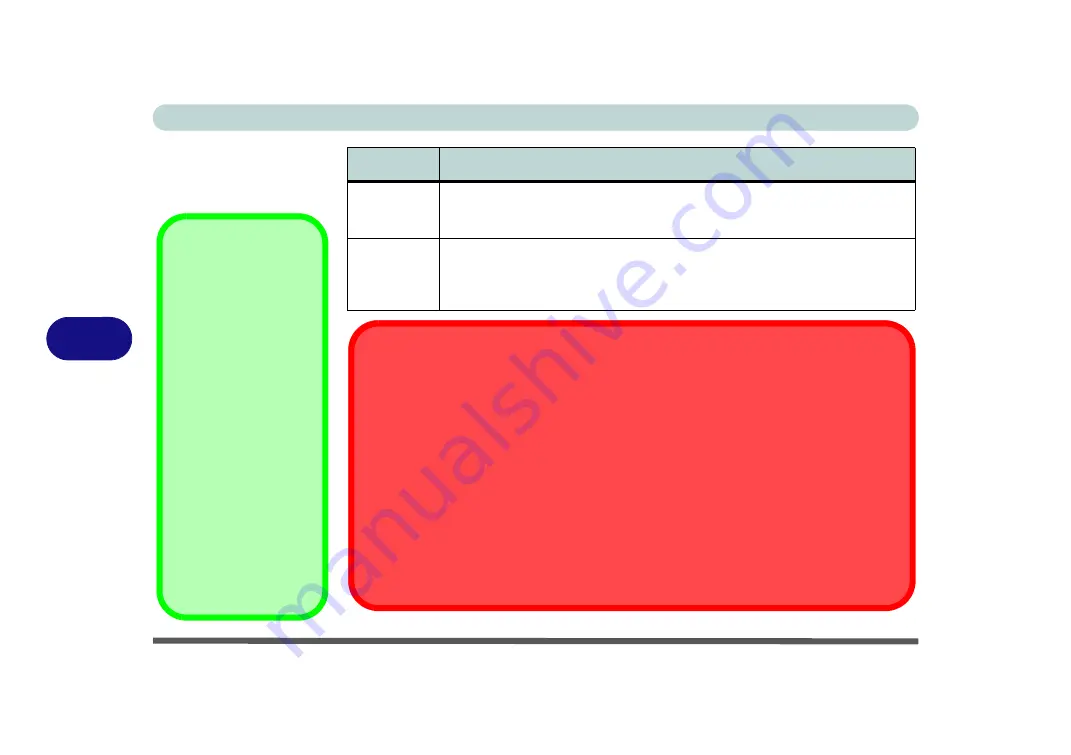
Modules
6 - 4 Setting Up SATA RAID, Optane™ or AHCI Mode
6
RAID Level
Description
RAID 0
Identical drives reading and writing data in parallel to
increase performance
. RAID 0
implements a striped disk array and the data is broken into blocks and each block is
written to a separate disk drive.
RAID 1
Identical drives in a mirrored configuration used to
protect data
. Should a drive that is
part of a mirrored array fail, the mirrored drive (which contains identical data) will
handle all the data. When a new replacement drive is installed, data to the new drive is
rebuilt from the mirrored drive to restore fault tolerance.
Table 6 - 1
RAID Levels
Array Types
A
Mirrored Array
(
RAID 1
) provides full
data protection, as
data can simply be
copied from a healthy
disk to a replacement
for any failed disk.
A
Striped Array
(
RAID 0
) is
NOT
fault-
tolerant. The failure of
one drive will result in
the loss of all data in
the array. It is de-
signed to increase disk
performance by
spreading the I/O load
across the channels
and drives.
SATA Mode Selection
The SATA mode selection should be made
before installing your operating system
.
DO NOT change your selected SATA mode
unless you intend to reinstall your operating
system. Make sure you have backed up all your data before doing so.
Note the following:
•
RAID mode with UEFI disabled (legacy mode) does not support PCIe SSDs.
•
AHCI mode with the IRST driver installed does not support PCIe SSDs.
Solid State Drives
All solid state drives in a RAID should be identical (the same size and brand) in order to
prevent unexpected system behavior.
Summary of Contents for PRO 17
Page 1: ...V17 3 00...
Page 2: ......
Page 20: ...XVIII Preface...
Page 36: ...XXXIV Preface...
Page 118: ...Power Management 3 26 3...
Page 152: ...BIOS Utilities 5 24 5...
Page 256: ...Interface Ports Jacks A 6 A...
Page 346: ...Video Driver Controls C 48 C...
















































